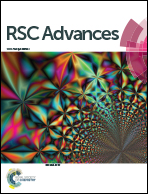Methane production from wheat straw pretreated with CaO2/cellulase
Abstract
There are various lignocellulosic biomass pretreatments that act as attractive strategies to improve anaerobic digestion for methane (CH4) generation. This study proposes an effective technique to obtain more CH4 via the hydrothermal coupled calcium peroxide (CaO2) co-cellulase pretreatment of lignocellulosic biomass. The total organic carbon in the hydrolysate of samples treated with 6% CaO2 and 15 mg enzyme per g-cellulose was 7330 mg L−1, which represented an increase of 92.39% over the total organic carbon value of samples hydrolyzed with the enzyme alone. The promotion of the anaerobic digestion of wheat straw followed this order: hydrothermal coupled CaO2 co-cellulase pretreatment > hydrothermal coupled CaO2 pretreatment > enzymatic pretreatment alone > control group. The sample treated with 6% CaO2 and 15 mg enzyme per g-cellulose gave the highest CH4 production with a CH4 yield of 214 mL g−1 total solids, which represented an increase of 64.81% compared to the control group. The CH4 yield decreased slightly when the amount of added cellulase exceeded 15 mg enzyme per g-cellulose.



 Please wait while we load your content...
Please wait while we load your content...